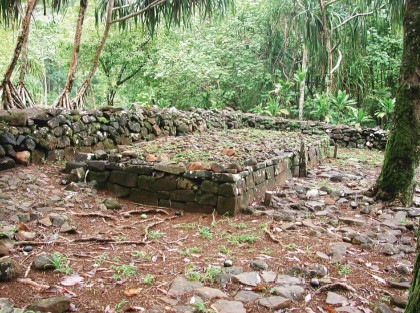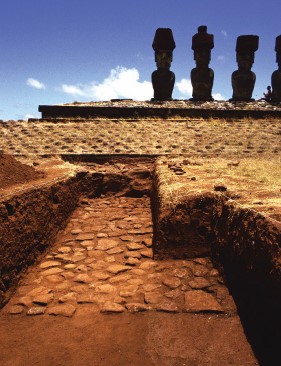Famous for its colossal stone heads – or moai – Easter Island is the scene of one of the great archaeological mysteries, as a unique monolithic ritual culture emerged and then vanished here – all for reasons unknown. Until now, it was widely believed that this rise and fall occurred in isolation from the outside world, yet new research suggests that the occupants of this far-flung speck in the middle of the Pacific were, in fact, in contact with other Polynesian islands thousands of miles away.
To reach this conclusion, the authors of a new study used radiocarbon dating to track the spread of ritual monuments across this vast region of remote islands. In doing so, they found that the first wave of ritual activity began in western Polynesia before spreading eastwards between roughly 1000 and 1300 CE.
This initial phase is characterized by the placement of single upright stones that were used to mark the sites of ceremonial activities such as feasts and burials. The eastward propagation of this tradition chimes well with established narratives that state that the peopling of Polynesia occurred from west to east, with Easter Island being the last to be populated.
Also known as Rapa Nui – after the ancient culture that inhabited it – Easter Island is said to have then remained cut off from wider networks of communication for many centuries, which would explain why moai are not found elsewhere.
However, the study authors found that a second wave ritual construction spread through Polynesia between roughly 1300 and 1600, as more formalized architecture, including stone platforms called marae or ahu, began to appear. Contrary to expectations, these structures seem to have originated on Rapa Nui, before spreading westwards across the rest of Polynesia.
“What we found is that, of course, the initial settlement came from west to east, with the early settlement reaching Rapa Nui around 1200 [CE], so there’s no problem with that,” said study author Professor Paul Wallin to IFLScience. “But when we’re looking at the existing dates of the formalized marae – and it’s about 160 that we have looked through – we easily find early-dated ahu temple grounds on Rapa Nui,” he said.

A marae featuring a central ahu (stone platform) on Mo’orea in the Society Islands.
Image credit: P. Wallin
On Easter Island, these structures begin to appear between 1300 and 1400 CE, yet Wallin explains that “when looking into East Polynesia, where it’s supposed to come from, we don’t have formalized marae with a date before 1400 to 1500 [CE] in Central and East Polynesia, and even later in the Cook Islands, which is the most western part of East Polynesia.”
This suggests that the marae/ahu ritual complex was invented on Easter Island before later being adopted by other islands to the west, undermining the idea that Rapa Nui was completely isolated. Such a finding is strengthened by the detection of a third wave of ritual construction – characterized by the creation of massive monuments designed to display power – which also began on Rapa Nui before spreading westwards through the rest of Polynesia.
According to the study authors, this tradition is evident on Easter Island from about 1350 CE onwards, yet didn’t take root in more western spots like Hawai’i or the Society Islands until the latter part of the 16th century.

A group of Moai atop an ahu platform on Rapa Nui.
Image credit: A. Skjölsvold
Wallin says that these findings shatter the idea of Rapa Nui lacking connections to other island communities, adding that this isn’t all that surprising when one considers genetic evidence showing that the people of Easter Island had contact with mainland South America.
“Some people argue that Rapa Nui people went to South America and back, and if they could do that, then they were very skilled sailors and could go the other way as well, to Mangareva [which lies to the west of Easter Island] or something,” he says.
“So the isolation thing is quite a strange argument.”
The study has been published in the journal Antiquity.
Source Link: Easter Island Was Never As Isolated As We Thought – Study Puts That "Strange Argument" To Bed